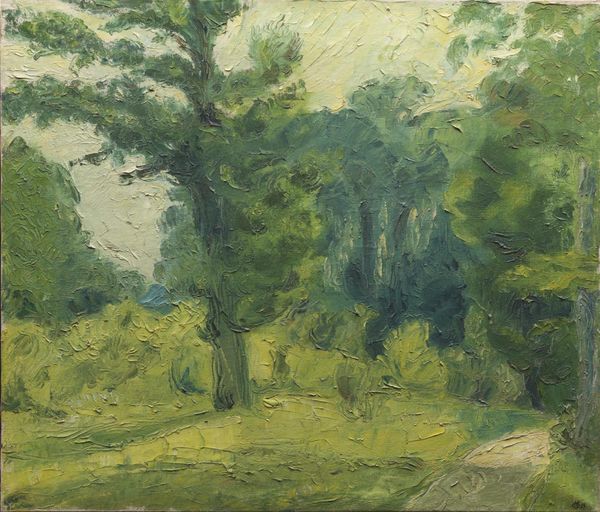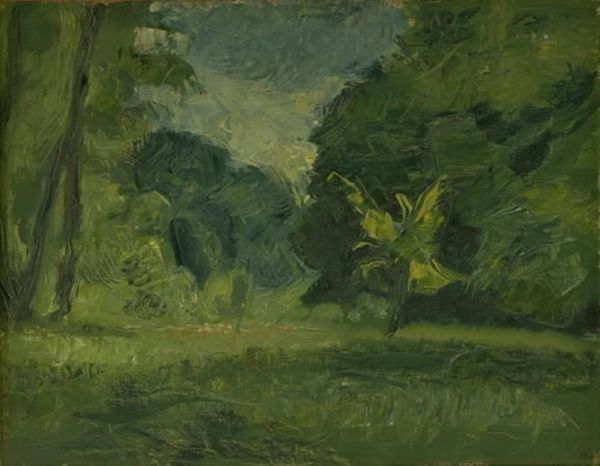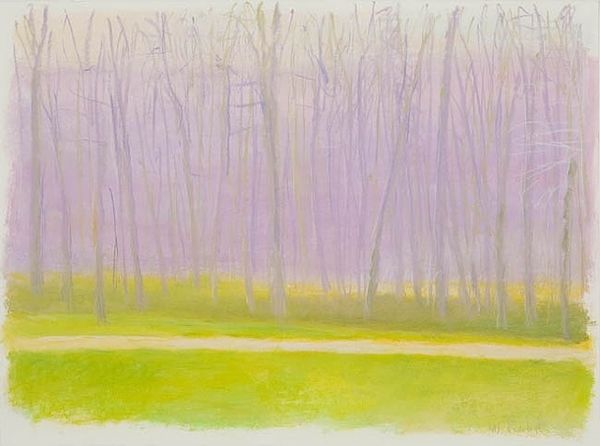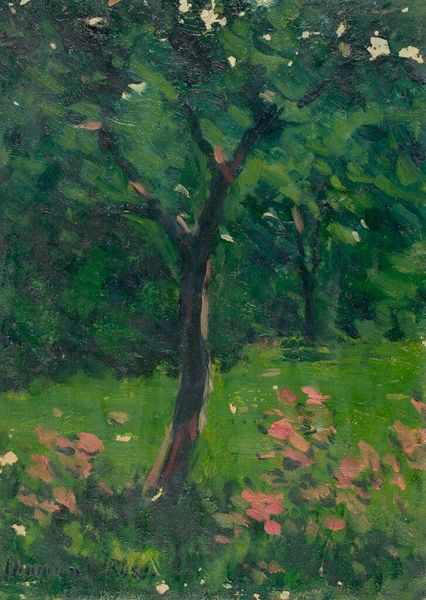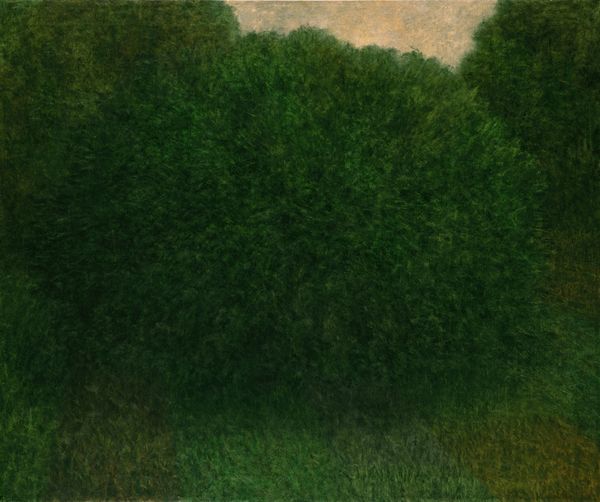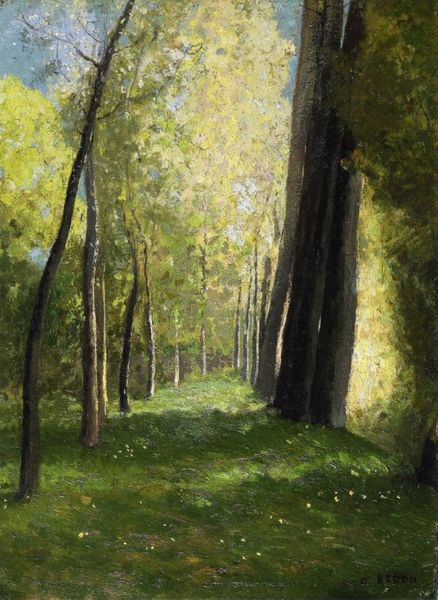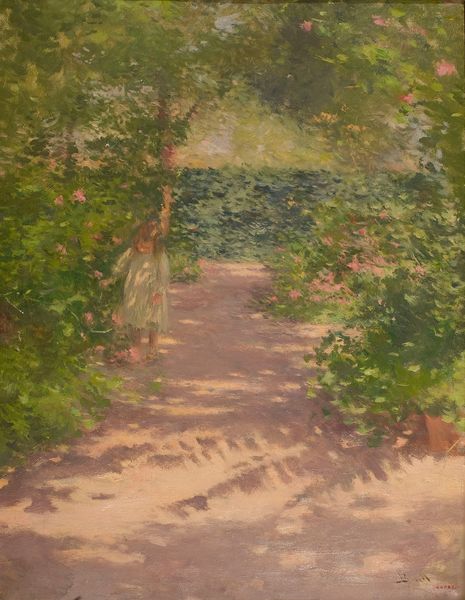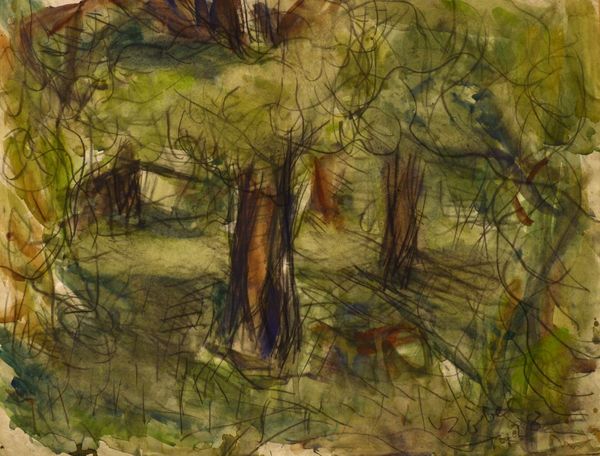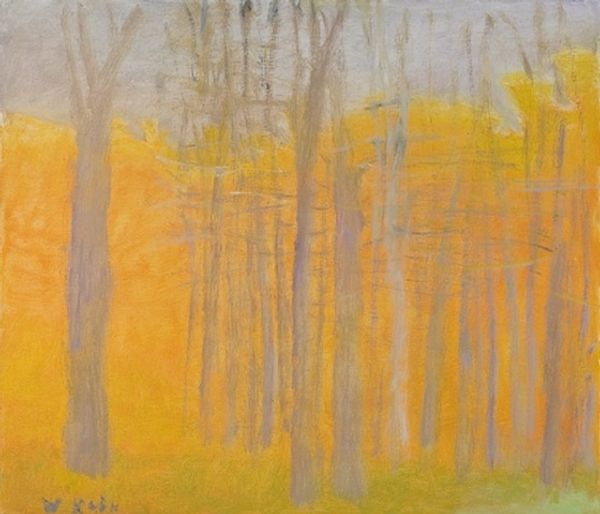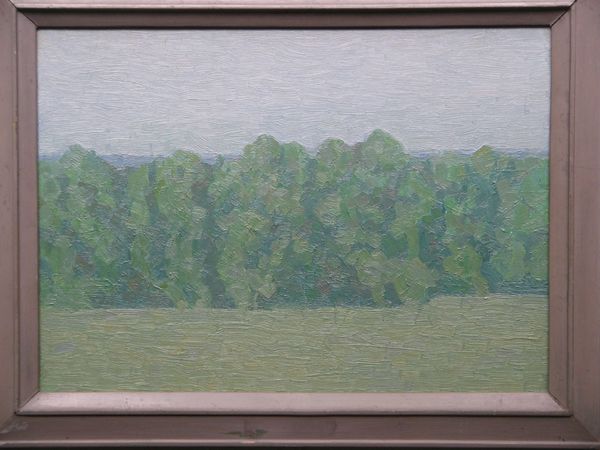
painting, oil-paint, impasto
#
painting
#
oil-paint
#
landscape
#
charcoal drawing
#
impasto
#
realism
Copyright: Modern Artists: Artvee
Curator: Here we have Iwo Zaniewski's painting entitled "Trees." It's rendered with oil paint using a pronounced impasto technique, though it is currently undated. Editor: It has this rather calming, almost meditative effect. The overwhelming green, like a curtain, is a bit heavy though; almost claustrophobic despite its subject matter. Curator: Let’s consider how this density speaks to Zaniewski's use of materials. The thick application of the oil paint—the impasto we mentioned earlier—captures light in a specific way, giving the leaves an almost tactile presence, right? What sort of commentary might the materiality itself offer, considering landscape painting’s history? Editor: Absolutely, but that saturation does impact its composition too. Look at how Zaniewski manipulates color value to subtly separate the treeline. The contrast between the bright canopy and the lower shadows guides our eye upward and maintains that almost tangible effect with light. Curator: Maybe the almost uniform green is deliberate. By denying us a clear, representational vista, Zaniewski asks us to consider the value of landscape as resource. The land as workplace, and then also the land as an abstracted idea separate from nature? Editor: I grant you that it does seem to reflect the labor through those bold brushstrokes and dense application. Still, if we linger, that depth offers space. What some might view as constraint is instead an exploration of form within limited means—green is life, growth. It represents all within that visual construct. Curator: Right. By concentrating his—and our—gaze solely on the color and texture of green, Zaniewski might be forcing a reflection upon production—agricultural practices, logging, manufacturing, our overall reliance upon the natural world. What if the density isn’t a limitation but rather symbolizes nature's resilience amidst overconsumption? Editor: In other words, an assertion of beauty and value but viewed from within. Curator: Exactly, but perhaps beauty and value seen not just aesthetically, but also as a product to consume and extract. Editor: Fair. This examination is certainly layered, both materially and formally. I admit that considering Zaniewski’s technique through this lens shifts my perspective. Curator: Indeed. It prompts us to question how deeply embedded ideas about the world ultimately shape how we represent that very same world.
Comments
No comments
Be the first to comment and join the conversation on the ultimate creative platform.
